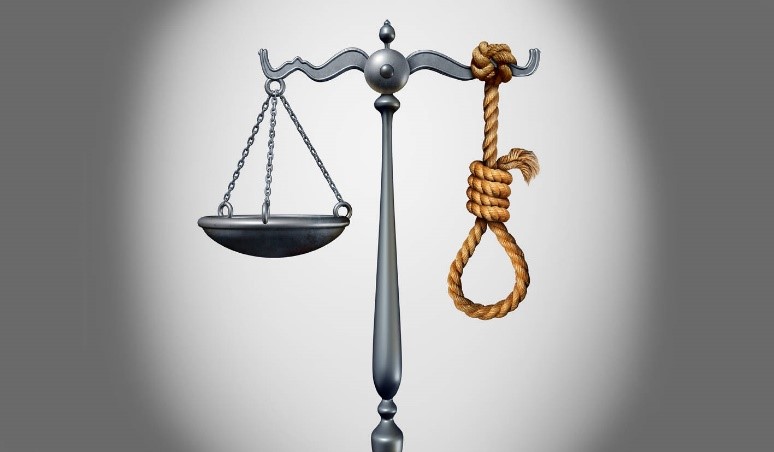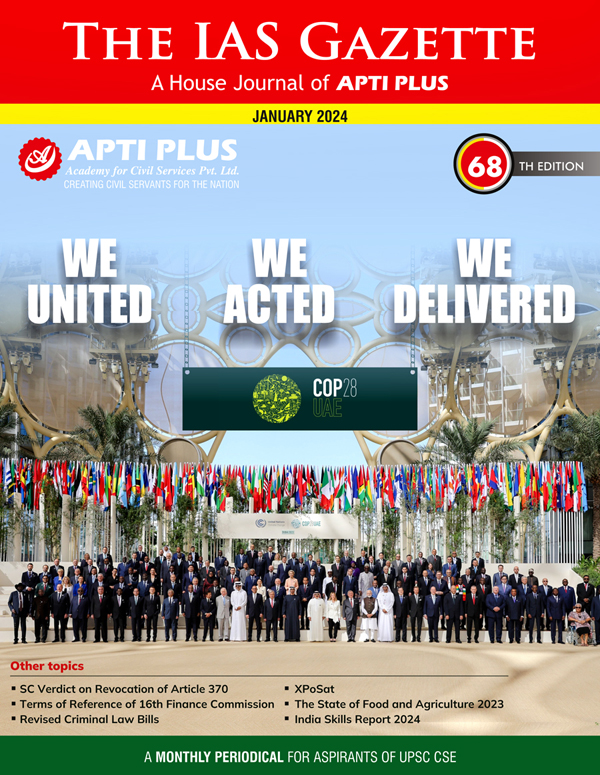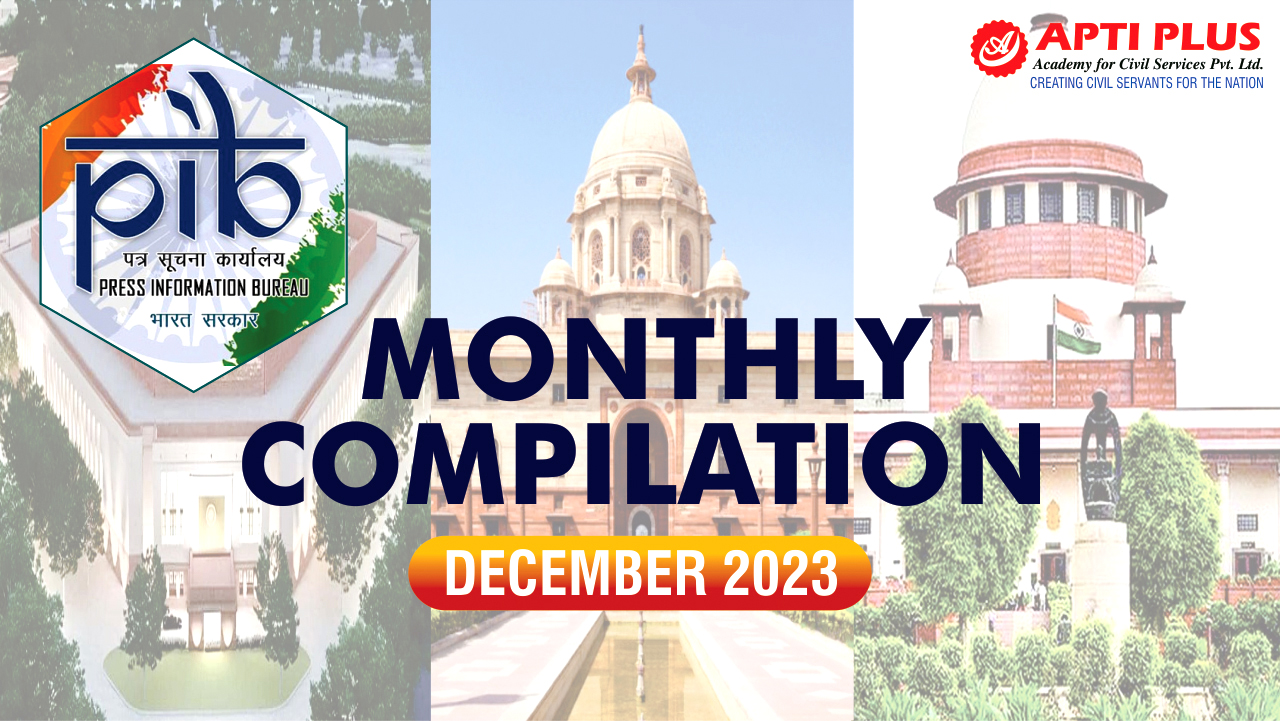Description

Disclaimer: Copyright infringement not intended.
Context
- The 'Death Penalty in India: Annual Statistics Report,' published by Project 39A, discloses significant insights into the country's death penalty landscape.
Findings of the Report
Key Statistics:
- In 2023, trial courts pronounced 120 death sentences nationwide, marking a substantial increase in death row inmates, totaling 561 by the year's end.
- This surge in the death row population represents the highest count in nearly two decades, witnessing a notable escalation of 45.71% since 2015.
Geographical Distribution:
- Uttar Pradesh accounted for the largest share of death row prisoners, tallying 119 individuals, with other states like Jharkhand, Gujarat, Haryana, Madhya Pradesh, and West Bengal also contributing significantly.
- Notably, murder cases involving sexual offenses constituted a dominant portion, representing 53.33% of the total death sentences imposed by trial courts in 2023.
Legal Proceedings:
- While trial courts actively sentenced offenders, the rate of disposal of death penalty confirmation proceedings at the high court saw a decline of 15% compared to the previous year.
- High court decisions resulted in 1 confirmed death sentence, 36 commuted to life imprisonment, and 36 acquitted of all charges, reflecting procedural lapses and fair trial concerns.
Supreme Court Involvement:
- In 2023, the Supreme Court refrained from confirming any death sentences while scrutinizing 10 cases, leading to the acquittal of 6 death row prisoners due to deficiencies in evidence and police investigations.
Presidential Intervention:
- The President of India declined one mercy petition in March 2023, pertaining to a case involving kidnapping, rape, and murder of a minor in 2008.
- Currently, 488 death row prisoners await judgment from high courts, indicating impending legal deliberations.
Trends over the Years:
- The report reflects a consistent rise in the death row population over the years, with 541 and 490 inmates recorded at the end of 2022 and 2021, respectively.
- Similarly, the number of death sentences awarded also depicted an upward trend, with 167 and 146 sentences pronounced in 2022 and 2021, respectively.
The report underscores the complex dynamics surrounding the death penalty in India, highlighting both quantitative increases and qualitative concerns in legal proceedings and judicial interventions.
- The death penalty, also known as capital punishment, is a legal sanction in India for certain grave offenses.
- It remains a topic of intense debate, with proponents arguing its necessity for maintaining law and order, and opponents advocating for its abolition on moral and human rights grounds.

Legal Framework:
- The death penalty is provided for under various statutes in India, including the Indian Penal Code, 1860, and special laws such as the Narcotic Drugs and Psychotropic Substances Act, 1985, and the Prevention of Terrorism Act, 2002 (now repealed).
- The most common offenses punishable by death include murder, terrorism-related offenses, and certain cases of rape.
Judicial Process:
- The imposition of the death penalty in India follows a judicial process that includes trial in lower courts, appeal to higher courts, and, in some cases, review by the President of India.
- Conviction for a capital offense typically involves a trial court sentencing the accused to death, followed by appeal to higher courts such as High Courts and the Supreme Court.
Current Status:
- While the death penalty remains legal in India, its application has become increasingly rare in recent years.
- The Supreme Court of India has emphasized the need for strict adherence to due process and imposed stringent criteria for the imposition of the death penalty, leading to fewer death sentences being upheld on appeal.
- However, there is no comprehensive data available on the number of individuals currently on death row in India.
Debate and Controversy:
- The death penalty continues to be a contentious issue in India, with proponents arguing its deterrent effect on crime and opponents raising concerns about its irreversibility, arbitrariness, and potential for miscarriage of justice.
- International human rights organizations, such as Amnesty International, have consistently called for the abolition of the death penalty in India, citing concerns about its compatibility with human rights standards.
Recent Developments:
- Recent years have seen a growing trend towards the abolition or restriction of the death penalty globally, with several countries either abolishing it entirely or imposing moratoriums on executions.
- In India, there have been calls from civil society groups, legal experts, and human rights activists for a reconsideration of the death penalty and its alignment with constitutional principles of justice, equality, and human dignity.
Arguments in Favor:
- Deterrence: Proponents argue that the death penalty serves as a deterrent against heinous crimes. The fear of facing capital punishment may dissuade potential offenders from committing serious offenses, thereby protecting society.
- Retribution: Advocates of the death penalty assert that it provides a sense of justice and closure to the victims' families and society as a whole. They believe that certain crimes warrant the ultimate punishment as a form of retribution for the harm caused.
- Public Opinion: Some argue that the death penalty reflects the sentiments and values of the majority of the population. As it is supported by a significant portion of society, it is seen as a legitimate form of punishment for the most egregious crimes.
- Legal Precedent: The death penalty has a historical and legal precedent in many societies, including India. It is enshrined in law and has been upheld by the judiciary, demonstrating its legitimacy within the legal framework of the country.
- Efficacy of Justice: Supporters contend that the death penalty ensures swift and final justice for the most serious offenses. It prevents convicted individuals from committing further crimes and serves as a decisive response to grave acts of violence.
Arguments Against:
- Irreversible Error: Opponents argue that the death penalty is irreversible and inherently flawed, leading to the risk of executing innocent individuals. Wrongful convictions and miscarriages of justice have occurred in the past, highlighting the fallibility of the judicial system.
- Violation of Human Rights: Critics assert that the death penalty violates fundamental human rights, including the right to life and the prohibition of cruel, inhuman, or degrading treatment. It is seen as a violation of human dignity and an outdated form of punishment.
- Arbitrariness and Bias: The application of the death penalty is often arbitrary and discriminatory, disproportionately affecting marginalized communities, ethnic minorities, and the economically disadvantaged. Factors such as race, ethnicity, and socioeconomic status can influence sentencing outcomes.
- Lack of Deterrence: Opponents question the deterrent effect of the death penalty, arguing that there is no conclusive evidence to support its effectiveness in preventing crime. They suggest that other factors, such as socioeconomic conditions and access to education and employment opportunities, have a greater impact on crime rates.
- Alternative Sentencing: Critics advocate for the abolition of the death penalty in favor of alternative sentencing options, such as life imprisonment without parole. They argue that life imprisonment allows for the possibility of rehabilitation and redemption, while also protecting society from dangerous individuals.
Suggestions for Reform:
- Abolition of the Death Penalty: One suggestion is to consider abolishing the death penalty altogether and replacing it with alternative forms of punishment, such as life imprisonment without parole. This would eliminate the risk of executing innocent individuals and uphold human rights principles.
- Strengthening Legal Safeguards: Another recommendation involves implementing measures to strengthen legal safeguards and procedural protections in death penalty cases. This may include ensuring access to competent legal representation, enhancing forensic evidence standards, and providing avenues for post-conviction review.
- Addressing Systemic Bias: Efforts should be made to address systemic bias and discrimination within the criminal justice system, particularly in the application of the death penalty. This may involve training for judges, prosecutors, and law enforcement officials on issues of racial and socioeconomic bias.
- Transparency and Accountability: Promoting transparency and accountability in the administration of the death penalty is essential. Making information on executions, including demographic data of those sentenced to death, readily available to the public can help identify patterns of bias and ensure fairness in sentencing.
- Moratorium on Executions: Consider imposing a moratorium on executions while conducting a comprehensive review of the death penalty system. This would provide an opportunity to assess the effectiveness, fairness, and ethical implications of capital punishment in the context of evolving societal values and international norms.
- Public Education and Awareness: Launching public education campaigns to raise awareness about the complexities and moral dilemmas surrounding the death penalty is crucial. Engaging with civil society organizations, academic institutions, and the media can facilitate informed discussions and debates on this issue.
- International Engagement: Engaging with international human rights organizations and stakeholders to exchange best practices and experiences in addressing the challenges associated with the death penalty is important. Participating in global initiatives aimed at promoting abolition and advancing human rights standards worldwide can be beneficial
Conclusion:
- The death penalty remains a complex and controversial issue in India, reflecting broader debates about justice, morality, and the role of the state in addressing crime and punishment.
- As public awareness and consciousness about human rights continue to evolve, the question of the death penalty's place in Indian society remains subject to ongoing scrutiny, debate, and reform efforts.
|
Project 39
Project 39 is a criminal justice research and legal aid initiative established at the National Law University in Delhi.
Inspired by Article 39-A of the Indian Constitution, which advocates for equal justice and equal opportunity by removing economic and social barriers, Project 39 aims to promote access to justice and uphold human rights principles.
|

|
PRACTICE QUESTION
Q. What is the primary interpretation of Section 43D (5) of the Unlawful Activities (Prevention) Act (UAPA) as discussed in a recent Supreme Court ruling?
a) Bail is granted as a rule and jail as an exception, emphasizing the accused's right to liberty
b) Bail is restricted, with the presumption of innocence outweighed by the severity of charges under the UAPA
c) Bail is determined based on the accused's financial resources and social standing, irrespective of the charges
d) Bail is granted based on the court's discretion, considering the accused's cooperation with the investigation
Correct Answer: b) Bail is restricted, with the presumption of innocence outweighed by the severity of charges under the UAPA
PRACTICE QUESTION
Q. Examine the Unlawful Activities Prevention Act (UAPA) in India, assessing its efficacy in combating terrorism while addressing civil liberties concerns.
|














